Robotics Education Journal
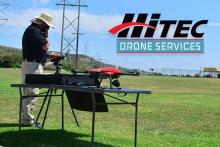 07/17/2020
07/17/2020 7-17-2020 Press Release by Hitec Commercial Solutions
We are excited to announce our new aerial service division Hitec Commercial Drone Services. Catering to the needs of customers in Agriculture, Construction & Excavation, Mining & Aggregates, Oil & Gas, Engineering & Surveying, Public Safety and many other vertical sectors, we provide end-to-end reliable drone services using our fleet of unmanned vehicles. Our proprietary Mission Control software and impressive data and photogrammetry collection techniques allow for the most comprehensive unmanned aviation experience.
Heading up this new division as our Field Services Director is Jim Bonnardel, an innovative entrepreneur with a history steeped in unmanned flight.
 07/16/2020
07/16/2020 Opportunities are still available for competitors to participate in the DARPA Subterranean (SubT) Challenge: Cave Circuit 2020 and Final Event 2021. Watch an introduction to the DARPA Subterranean Challenge (SubT) with Program Manager Timothy Chung on Monday July 20 at 12pm PDT. See also a link to current Robotnik UGVs in this update.
 07/14/2020
07/14/2020 We were deeply saddened to learn that former Mythbuster, STEM education advocate and DIY robotics & mechatronics master Grant Imahara has passed. He was 49. Among his many diverse initiatives, Grant gave a lot of his time to former Robot magazine to promote hands-on technology to students of all ages.
 07/13/2020
07/13/2020 Commentators have evaluated the outcome of drone attacks and the balance between offense and defense, and their reports cast some light on how difficult effective air defense is in an era of comparatively inexpensive armed drones and precision guided low-flying cruise missiles. Reporting in this arena appears to show that some C-UAS weapons have not been used owing to operational complexity and others owing to political issues. The edge seems to be in favor of offensive UAS at this juncture.
 07/08/2020
07/08/2020 Artificial intelligence (AI) was once the province of science fiction, but today, it is growing around us in nearly every technology we use on a daily basis. A brief survey of a few areas in which AI is becoming prominent in modern life shows how it permeates today’s world. To help frame this presentation, “Artificial general intelligence” (AGI) is the hypothetical intelligence of a machine that has the capacity to understand or learn any intellectual task that a human being can. “Machine learning” is a form of AI that systematizes the ability of robots to improve their operational algorithms, on their own, without being reprogrammed by humans.
 07/04/2020
07/04/2020 On this patriotic day celebrating the birth of American independence, it's fitting for us to reflect on the Voyager spacecraft launched from our great nation under the visionary watch of Carl Sagan, one of our greatest astronomers, planetary scientists and cosmologists. The two Voyagers are the farthest-reaching unmanned missions in human history and both robots are still operational today, 40+ years later!
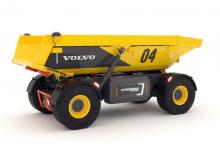 07/03/2020
07/03/2020 The TA15 autonomous electric hauler, built by Volvo Autonomous Solutions, won the prestigious Red Dot Product Design Award in what is reportedly the world’s largest and most distinguished design competition. The battery-powered electric truck carries Lidar, Radar, GPS and other sensors for autonomous operation.
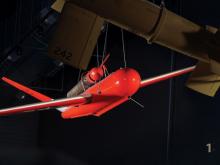 07/02/2020
07/02/2020 In an interesting reflection on unmanned systems aviation history, the # 20 - 13 - 27 JUNE 2020 edition of the UNMANNED SYSTEMS NEWS (USN) describes the primitive origins of today’s ubiquitous drones: “In the 1940s, Drones Were Just Something for Navy Gunners to Shoot At (These were TRUE DRONES not UAVs). These were Radio-controlled, gyro-stabilized, and powered by an externally mounted, gasoline-powered pulsejet engine, which used a design similar to the German V-1 rocket to deliver 55 pounds of thrust. The ‘Katydid’ was one of the most sophisticated UAVs of the mid- to late 1940s. Recognizable by its distinct V-tail, the 320-pound drone could be launched via an AT-1 catapult or released from the bomb rack of a PBY-4 Catalina, at which point gunners would attempt to draw a bead on it.”
 06/27/2020
06/27/2020 This remote-control cetacean was designed by San Francisco’s Edge Innovations in conjunction with Walt Conti and Roger Holzberg, the former Creative Director/Vice-President at Walt Disney Imagineering. The initial prospects for the bottlenose dolphin robot include Chinese theme parks and aquariums. Edge Innovations hopes to sell up to 150 over three years. With mechanics and a center of gravity designed to help it faithfully mimic the swimming of the live animal, the robot bottlenose dolphin can swim for 10 hours on a charge.
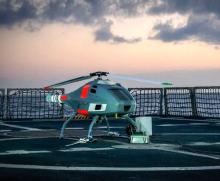 06/25/2020
06/25/2020 CUAS News reported that “Europe’s leading provider of Rotary Unmanned Aerial Vehicle (UAV) platforms, UMS SKELDAR, will host a webinar to formally announce its new contract win with the Belgian and Dutch Navies.” The deal will be the first to use the “Toolbox” concept, in which a variety of autonomous UAVs and underwater vehicles (AUVs) will work in unison. SKELDAR V-200 was selected owing to its advanced heavy fuel engine. It is equipped for day or night surveillance and 3D mapping. First deliveries are scheduled for 2023.
 06/24/2020
06/24/2020 MIT researchers described the “brain-on-a-chip” technology in a recent Nature Nanotechnology article. Tens of thousands of artificial brain synapses, “memristors”, made of silver and copper alloys comprise the chip. These alloy-based synapses are said to be more efficient than previous non-alloy versions. The research represents a step toward “neuromorphic devices” that mimic the brain’s neural architecture.
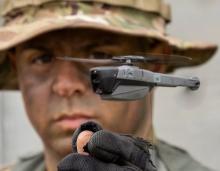 06/22/2020
06/22/2020 On June 18, in its daily eBrief, the AUVSI posted a story by Harry McNabbon on FLIR Nano drone swarms that recently appeared on Dronelife.com. FLIR, maker of the Black Hornet NANO drone was awarded a $20.6 million contract to produce Black Hornet® 3 Personal Reconnaissance Systems (PRS) for the military. “The recent contract for Black Hornets is an addition to the $39.7 million contract that the U.S. Army awarded FLIR in January of last year.”
 06/21/2020
06/21/2020 This compilation reveals two dozen humanoid robots used in R&D across the world, today. These links include most of the publicly known leading engineering in this exotic humanoid robotics realm; and we think you will agree, these projects resonate to decades of science fiction. As an introduction, we have included images of a few of the coolest pioneering robot humanoids. Top down: Agility Robotics Cassie, Seisun DSCR5, Kawada Industries AIST HRP-2, AMY-M1B Financial Service Robot, and the historic Westinghouse Elektro. Don't miss the links to over two dozen leading humanoid robotic platforms that represent today's state-of-the-art.
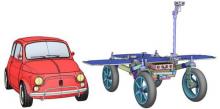 06/18/2020
06/18/2020 The BBC recently reported that the European Space Agency is “moving rapidly to develop its next Mars rover.” This mission is part of a project to return samples to Earth. “Esa has awarded an advanced B2 contract to the UK arm of the aerospace giant Airbus, which will enable the firm to kick-start the necessary technologies. The new rover is dubbed "Fetch" because its mission will be to find and retrieve the rock samples that have been collected and cached on the surface by the American Perseverance rover, which is heading to Mars next month.”
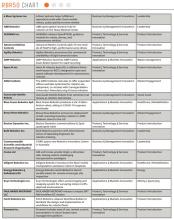 06/16/2020
06/16/2020 Business-to-business publisher WTWH Media has announced the winners of the 2020 RBR50 robotics innovation awards. We recommend exploring this comprehensive report on 50 of the leading robotics firms.
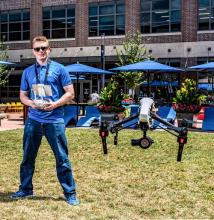 06/15/2020
06/15/2020 Pierce Aerospace is a “Remote Identification” company that supplies drone Remote ID information to the US Department of Defense and commercial sectors. Pierce Aerospace uses their identification management technologies to assist in identifying drones while they are flying in the National Airspace System using broadcast or network identification methods. Gary Bullock said, “As the proposed rules stand, if a drone is larger than 250 grams, it will have to be equipped with Remote ID.” Bullock explained, “It’s like a digital license plate in the sky.”
Pierce Aerospace saw a business opportunity given the high demand for remote drone identification services, and has several remote ID engagements. The US Air Force awarded a contract to Pierce in Fall 2018 and they’ve worked with US Army Futures Command since early 2019, including providing Remote ID capabilities to live-fire experiments.
Commercial engagements include alignments with Redwing Labs, a drone delivery company located in India and Altitude Angel, an Unmanned Traffic Management provider based in the United Kingdom. “We’re an integrator that adds value to other existing or future technologies including UTM providers or Counter-UAS systems,” explained Bullock. “This is an infrastructure technology and we’re happy to support the success of others as this industry grows.”
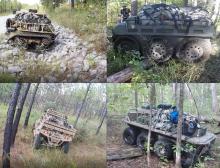 06/13/2020
06/13/2020 The U.S. Army will award a June 2020 contract for hundreds of unmanned ground vehicle (UGV) automated robotic mules to the winning bidder. These off-road machines will assist troops by hauling tons of supplies for light infantry on the move. Mobility is achieved by tracks, wheels, and in one case the candidate vehicle uses all-metal tweels.
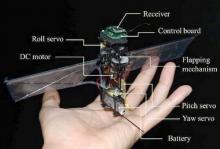 06/10/2020
06/10/2020 KUBeetle-S weighs 15.8grams and is capable of controlled multi-directional flight for up to 9 minutes. The aerial robot is a biomimetic design patterned after the flying beetle, Allomyrina dichotoma.
 06/02/2020
06/02/2020 Robohub recently posted a fascinating interview with Mark Tilden, the longtime advocate of BEAM robotics (BEAM stands for Biology, Electronics, Aesthetics, and Mechanics). BEAM robotics are based on simple analog circuits. BEAM robots, in comparison to digital-processor based robots, are lower-cost and noted for their efficiency. Tilden modeled many BEAM robots after biological form factors, and his robots could navigate relatively complex environments using only a few transistors and basic sensors. One of his goals was to stimulate STEM learning among robot enthusiasts, and he designed his BEAM robots to be disassembled and repurposed in other experiments.
 05/29/2020
05/29/2020 Can small-diameter tactical tunnel networks resupply the military effectively? Can a giant “robot earthworm” dig the tunnels? DefenseOne[dot]com reports that “Underminer aims to create aggressive tunneling approaches, downhole sensing, and …could incorporate capabilities from the commercial sector, including oil and gas, utility, geological, environmental, and other industries.”
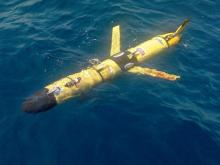 05/21/2020
05/21/2020 On April 10, Secoora.org, the Southeast Coastal Ocean Observing Regional Association, published a report titled “Underwater Glider Collects Data to Study Red Tide Bloom Dynamics off Gulf Coast of Florida.” The report highlighted the Teledyne Slocum Glider remotely operated vehicle (ROV), a buoyancy-driven gliding robot capable of long-range fleet missions addressing a diverse range of sampling applications. The ROV can be remotely controlled or run pre-programmed routes with regular surfacing to transmit data to operators and download new instructions.
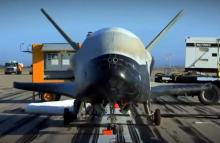 05/17/2020
05/17/2020 Riding a United Launch Alliance Atlas V rocket, the vehicle that resembles a little sister to the Space Shuttle blasted off from Complex 41 at Cape Canaveral Air Force Station at 9:14 a.m. EDT (1314 GMT). The secretive mission explores microwave power transmission, and is summarized in a few images and an illustration, in a report by Amy Thompson, courtesy of Space[dot]com.
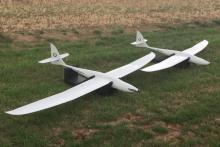 05/14/2020
05/14/2020 SUASNEWS.com reported that Blue Bear Systems Research, Ltd., in Bedford, England, successfully flew 5 autonomous fixed wing drones under beyond-visual-line-of-sight (BVLOS) conditions. The BVLOS flight demonstrated that a drone swarm could execute multiple simultaneous tasks remotely while being flown by a single human operator.
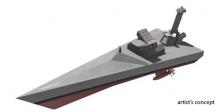 05/10/2020
05/10/2020 At a recent C4ISR Conference, a senior DARPA official noted that a DARPA project in gestation could boost the NAVY’s unmanned surface vessel aspirations forward a decade. Multiple programs are underway for the NAVY’s development of medium and large unmanned surface vehicles. The DARPA project, christened “NOMARS” (for “no mariners”), is a separate mission, but the benefits it might produce could be “a giant leap forward” for the NAVY concepts, said Mike Leahy, head of the DARPA Tactical Technology Office.
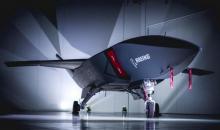 05/05/2020
05/05/2020 Brad Lendon reported for CNN WORLD that the Royal Australian Air Force (RAAF) in Sydney has received its first “loyal wingman” jet-powered drone that uses artificial intelligence. The prototype represents a new generation of AI enabled UAVs that will support manned aircraft at a “safe distance.” The drones will support intelligence, reconnaissance and surveillance (ISR) missions and perform electronic warfare.
Boeing reported that the drone is the first aircraft "to be designed, engineered and manufactured in Australia in more than 50 years." The drones will protect F-35 stealth fighters but also may be used to help manage the coronavirus crisis.
